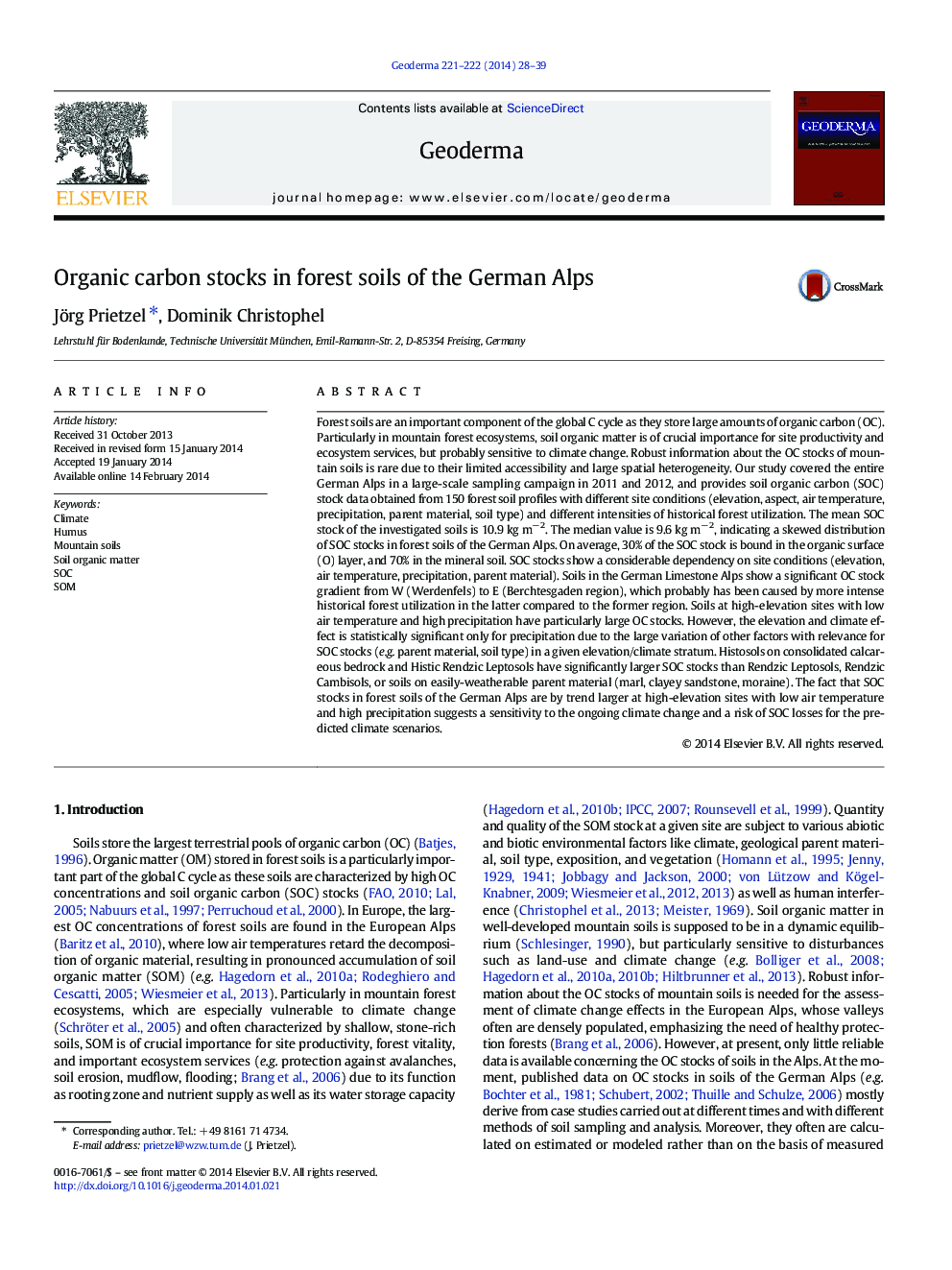| Article ID | Journal | Published Year | Pages | File Type |
|---|---|---|---|---|
| 6408804 | Geoderma | 2014 | 12 Pages |
â¢SOC stocks of forest soils in the German Alps are on average 10.9 kg mâ 2.â¢Highly skewed distribution; majority of soils have SOC stocks < 8 kg mâ 2.â¢Less SOC in Eastern German Alps, where historical forest utilization was intensive.â¢SOC stocks are dependent on site elevation, air temperature and precipitation.â¢SOC stocks are sensitive to the ongoing climate change.
Forest soils are an important component of the global C cycle as they store large amounts of organic carbon (OC). Particularly in mountain forest ecosystems, soil organic matter is of crucial importance for site productivity and ecosystem services, but probably sensitive to climate change. Robust information about the OC stocks of mountain soils is rare due to their limited accessibility and large spatial heterogeneity. Our study covered the entire German Alps in a large-scale sampling campaign in 2011 and 2012, and provides soil organic carbon (SOC) stock data obtained from 150 forest soil profiles with different site conditions (elevation, aspect, air temperature, precipitation, parent material, soil type) and different intensities of historical forest utilization. The mean SOC stock of the investigated soils is 10.9 kg mâ 2. The median value is 9.6 kg mâ 2, indicating a skewed distribution of SOC stocks in forest soils of the German Alps. On average, 30% of the SOC stock is bound in the organic surface (O) layer, and 70% in the mineral soil. SOC stocks show a considerable dependency on site conditions (elevation, air temperature, precipitation, parent material). Soils in the German Limestone Alps show a significant OC stock gradient from W (Werdenfels) to E (Berchtesgaden region), which probably has been caused by more intense historical forest utilization in the latter compared to the former region. Soils at high-elevation sites with low air temperature and high precipitation have particularly large OC stocks. However, the elevation and climate effect is statistically significant only for precipitation due to the large variation of other factors with relevance for SOC stocks (e.g. parent material, soil type) in a given elevation/climate stratum. Histosols on consolidated calcareous bedrock and Histic Rendzic Leptosols have significantly larger SOC stocks than Rendzic Leptosols, Rendzic Cambisols, or soils on easily-weatherable parent material (marl, clayey sandstone, moraine). The fact that SOC stocks in forest soils of the German Alps are by trend larger at high-elevation sites with low air temperature and high precipitation suggests a sensitivity to the ongoing climate change and a risk of SOC losses for the predicted climate scenarios.
